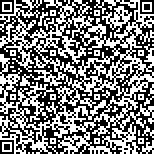下载中心
优秀审稿专家
优秀论文
相关链接
摘要

关键词:
Land cover is a fundamental variable that links many facets of the natural environment and a key driver of global environmental change. Alterations in its status can have significant ramifications at local, regional and global levels. Hence, it is imperative to map land cover at a range of spatial and temporal scales with a view to understanding the inherent patterns for effective characterization, prediction and management of the potential environmental impacts. This paper presents the results of an effort to map land cover patterns in Kinangop division, Kenya, using geospatial tools. This is a geographic locality that has ex-perienced rapid land use transformations since Kenya’s independence culminating in uncontrolled land cover changes and loss of biodiversity. The changes in land use/ cover constrain the natural resource base and presuppose availability of quantitative and spatially explicit land cover data for understanding the inherent patterns and facilitating specific and multi-purpose land use planning and management. As such, the study had two objectives viz. (i) mapping the spatial patterns of land cover in Kinangop using remote sensing and GIS and; (ii) evaluating the quality of the resultant land cover map. ASTER satellite imagery acquired in January 23, 2007 was procured and field data gathered between September 10 and October 16, 2007. The latter were used for training the maximum likelihood classifier and validating the resultant land cover map. The land cover classification yielded 5 classes, overall accuracy of 83.5 % and kappa statistic of 0.79, which conforms to the acceptable standards of land cover mapping. This qualifies its application in environmental decision-making and manifests the utility of geospatial techniques in mapping land resources.

